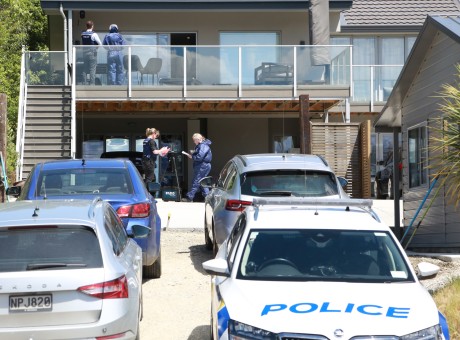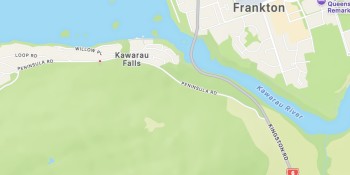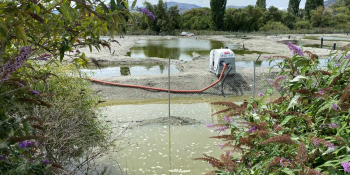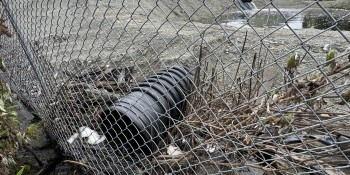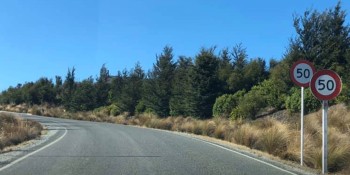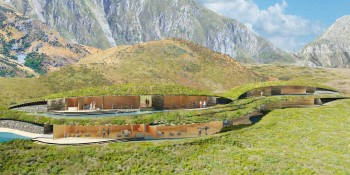Engineer uncovers over 250 Q'town airport safety incidents
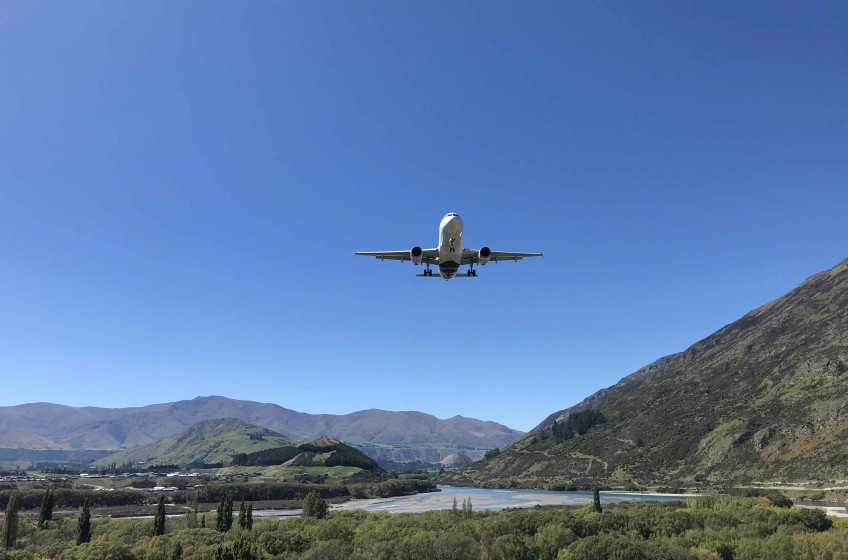
A Queenstown engineer, representing the We Love Wakatipu incorporated society, has uncovered Civil Aviation Authority records of over 700 incidents at Queenstown airport, with over 250 relating to dangerous windshear conditions. Six incidents relate to aircraft icing problems.
John Halse has previously warned QLDC about the danger of aircraft icing at Queenstown airport, but these latest safety disclosures relate to specific local flying conditions near the mountains.
This is part of John Halse' presentation to QLDC this week. You can read the full version here.

Engineer John Halse - concerned about both aircraft icing and windshear at Queenstown Airport.
“Under the Freedom of Information Act, I have recently obtained the Civil Aviation Authority incident reports for ZQN for the last 4 years. There are over 700 incidents listed in this 26 page log of which 6 relate to (severe) icing and 251 relate to aborted landings and go-arounds or diversions to other airports due to wind shear.
Statistically, this is a staggeringly high and frightening number, as will be verified by any commercial passenger jet pilot who flies to ZQN. There are also a very large number of incidents where aircraft stray into ZQN’s small controlled airspace without warning. This log makes for very sobering reading indeed. I encourage you (QLDC) to take the time to peruse it.”
Here is a link to the full log of Civil Aviation Authority Incident reports as disclosed by John Halse.
This is how Windshear is defined by Wikipedia. Note that windshear can be caused by either thunderstorms or flying in close proximity to mountains.
"Impact on passenger aircraft
Effect of wind shear on aircraft trajectory. Note how merely correcting for the initial gust front can have dire consequences.
Strong outflow from thunderstorms causes rapid changes in the three-dimensional wind velocity just above ground level. Initially, this outflow causes a headwind that increases airspeed, which normally causes a pilot to reduce engine power if they are unaware of the wind shear. As the aircraft passes into the region of the downdraft, the localized headwind diminishes, reducing the aircraft's airspeed and increasing its sink rate. Then, when the aircraft passes through the other side of the downdraft, the headwind becomes a tailwind, reducing lift generated by the wings, and leaving the aircraft in a low-power, low-speed descent. This can lead to an accident if the aircraft is too low to effect a recovery before ground contact.
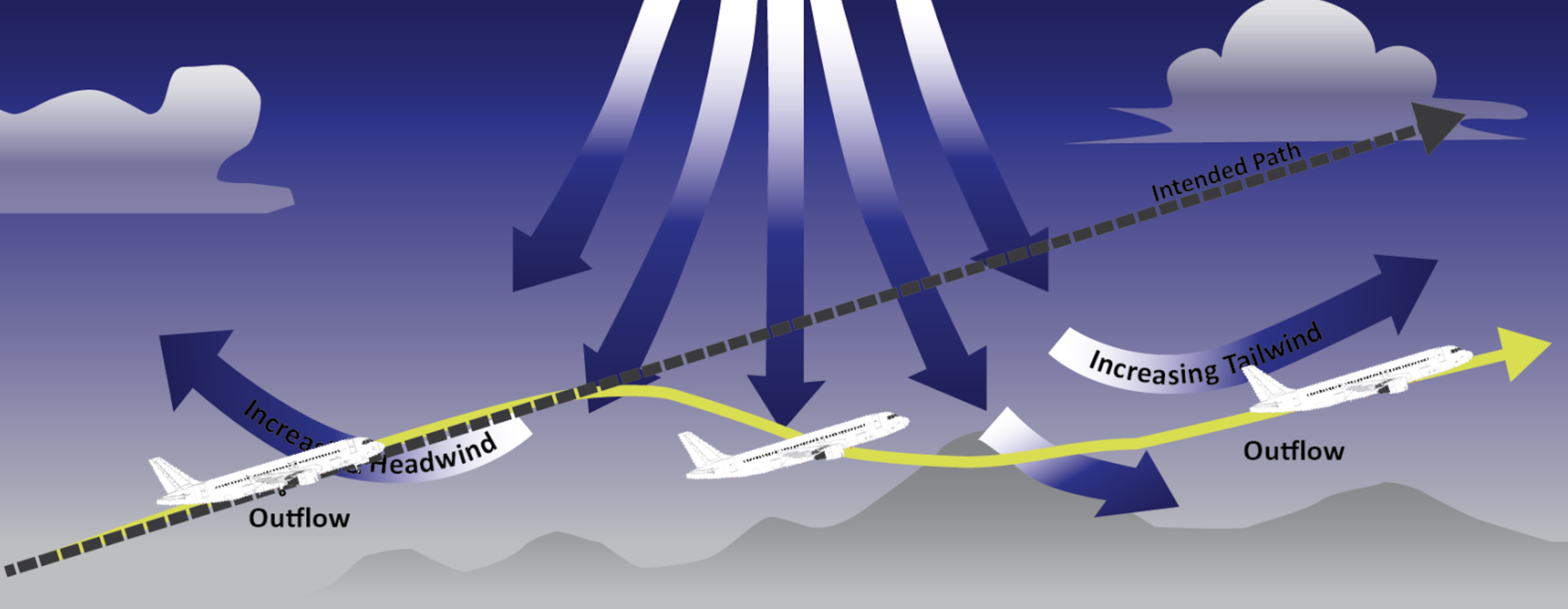
Windshear can produce a combination of rapidly sinking or rising air - sometimes close to the ground.
As the result of the accidents in the 1970s and 1980s, most notably following the 1985 crash of Delta Air Lines Flight 191, in 1988, the U.S. Federal Aviation Administration mandated that all commercial aircraft have on-board wind shear detection systems by 1993. Between 1964 and 1985, wind shear directly caused or contributed to 26 major civil transport aircraft accidents in the U.S. that led to 620 deaths and 200 injuries.[24] Since 1995, the number of major civil aircraft accidents caused by wind shear has dropped to approximately one every ten years, due to the mandated on-board detection as well as the addition of Doppler weather radar units on the ground (NEXRAD). The installation of high-resolution Terminal Doppler Weather Radar stations at many U.S. airports that are commonly affected by wind shear has further aided the ability of pilots and ground controllers to avoid wind shear conditions." Source: Wikipedia.
In his presentation to council this week John Halse described exactly how windshear affects operations at Queenstown airport (ZQN).
“The maximum permissible tail wind landing speed of an A320 on a “normal length” runway is 15 knots (approx. 28km/hr) in wet or dry conditions. An A320 can land at ZQN with up to 10 knots (18km/hr) tail wind when the runway is dry however pilots generally choose a maximum tail wind speed of 5 knots (8 km/hr) to de-risk the landing. A wet or iced runway at ZQN is considerably more restrictive. This is because the runway is so short that an A320 cannot safely come to a stop if it touches down a little late and/or a little fast and/or there is standing water or ice on the runway i.e. there is no margin for error.”
Crux has passed this story on to the Queenstown Airport Corporation and Air New Zealand for comment. We will publish their full responses when received.
Here's John Halse speaking to Crux earlier this year about his aircraft icing concerns.





